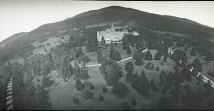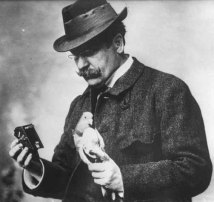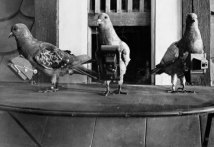28. November 2014 - verlängert bis 18. Januar 2015 im Saalfoyer
28. November 2014 - 18. January 2015
When homing pigeons became photographers

Pigeons in flight see the earth like we might see it in our dreams, when we're dreaming we can fly. In the beginning of the 20th century, pharmacist Julius Neubronner (1852 - 1932) from Kronberg was experimenting with miniature cameras attached to homing pigeons.

He trained his pigeons to fly around with cameras attached to them by means of a little harness, wich approx 1/3rd of their own weight. The cameras should work automatically, providing arial shots. The time of exposure was calculated taking into account the travel speed of the pigeons and the distance to the area to be photographed.

Neubronner thought that his invention could be used for military purposes, but the development of military aviation made his invention obsolete. The Swiss watchmaker Christian Adrian Michel (1912 – 1980) also worked on photography by means of pigeons, as did the French military and the CIA.

Over the turn of the year will be showing photos taken with Neubronner's pigeon cameras over Taunus, Berlin and other locations in the Saalfoyer (level 1).
In addition, we'll be showing the Brooklyn Pigeon Project (2004) by New York architects Benjamin Aranda and Chris Lasch.
To accompany the exhibition we have published issue 16 of edition stadthaus: Über Julius Neubronner und wie er die Brieftaubenfotografie erfand. (Available in German only.)
Project management: Karla Nieraad